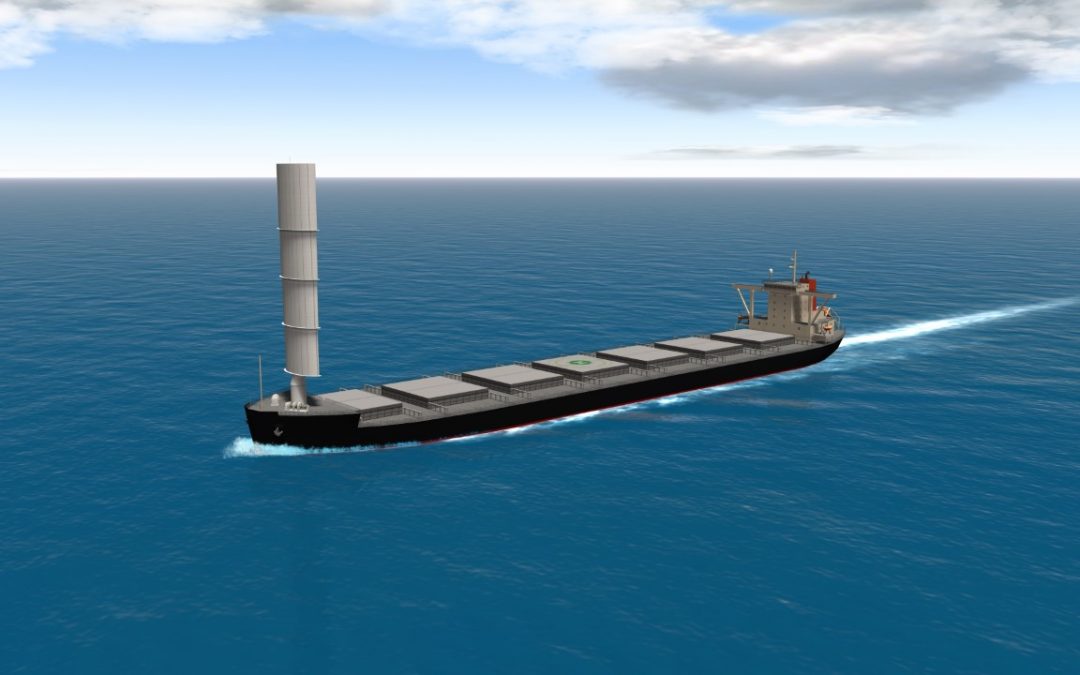Japanese shipowner Mitsui O.S.K. Lines has reached a coal transport deal with Tohoku Electric Power Co., using a coal carrier equipped with a hard sail wind power propulsion system, also known as the Wind Challenger.
Construction of the vessel will start at Oshima Shipbuilding aiming to start operation in 2022.
The introduction of the Wind Challenger is expected to reduce emissions of greenhouse gases (GHGs) by about 5% on the Japan-Australia route or about 8% on the Japan-North America West Coast route, in comparison with a conventional vessel of the same class.
MOL and Tohoku Electric Power plan to conduct more verification tests on the system’s GHG reduction effects toward the 2022 target date for the new carrier to begin operation.
“We are of course delighted to see further movement in the MOL Wind Challenger project, the development, and deployment of robust wingsail and other wind propulsion systems is picking up pace and this will be another important demonstrator, with a system that has gone through a rigorous development process. MOL, Oshima Shipbuilding and the Wind Challenger development team bring a huge amount of knowledge and experience to the sector,” Gavin Allwright, Secretary General, International Windship Association (IWSA), told Offshore Energy – Green Marine in a comment.
As explained, Asia is an extremely important shipping market, and the fact that big players in the region are engaging with wind, testing and installing systems there is a very strong statement of intent in the market.
Shipbuilders in the region are also assessing wind-assist propulsion technologies and the potential for building primary wind vessel designs as a growth area for their business alongside alternative fuelled vessels. All indications in China, Korea and Japan are that will only grow going forward.
MOL and Oshima have been at the forefront of the Wind Challenger Project development for two years now, with the aim of launching a newbuilding vessel equipped with a hard sail.
The Wind Challenger Plan started in 2009 as an industry-academia joint research project led by the University of Tokyo.
In January 2018, MOL and Oshima Shipbuilding took charge of the plan and now play a central role in this project.
The duo won an Approval in Principle for the design of the hard sail system from ClassNK back in 2019.
The system converts wind energy to propulsive force with a telescopic hard sail.
Obtaining the AIP marks the completion of the initial design related to the sail structure and controls.
The long-term goal is to develop a widely accepted solution to achieve the IMO target in combination with other measures to reduce GHGs by equipping vessels with multiple sails.
Separately, MOL announced at the end of November that it had joined a zero-emission initiative called the Wind Hunter Project, seeking new applications for hydrogen fuel and wind power.
The project intends to use its rigid, collapsible sail technology developed under the Wind Challenger project on vessels capable of capturing that power during high wind periods to generate hydrogen for use during lower wind sections of the voyage.
The project team aims to give a new and first step to realize a decarbonized and hydrogen society.
Source: Offshore Energy






